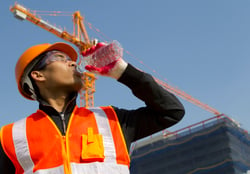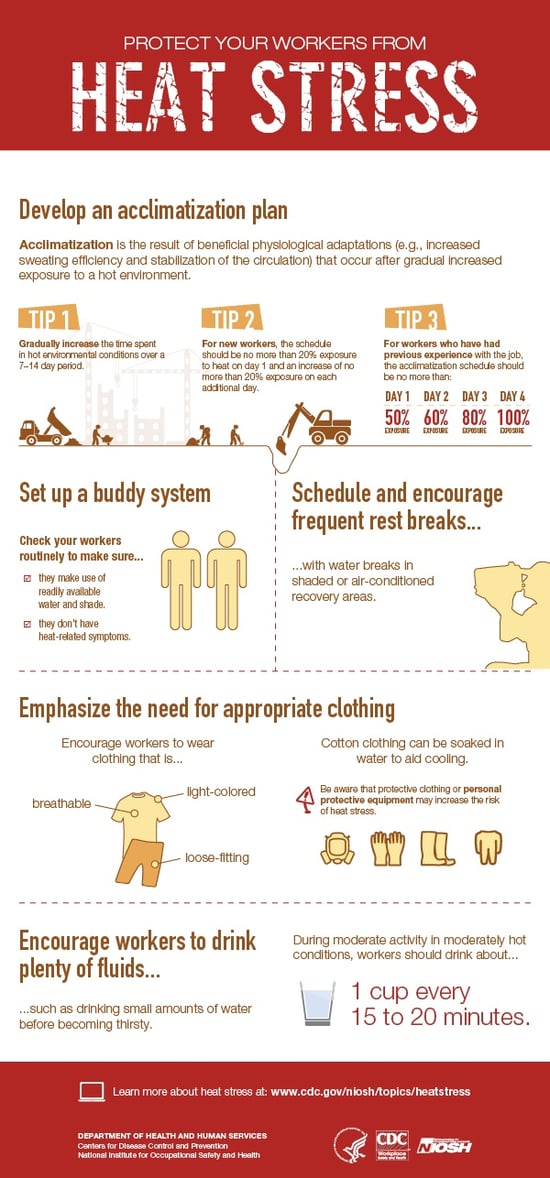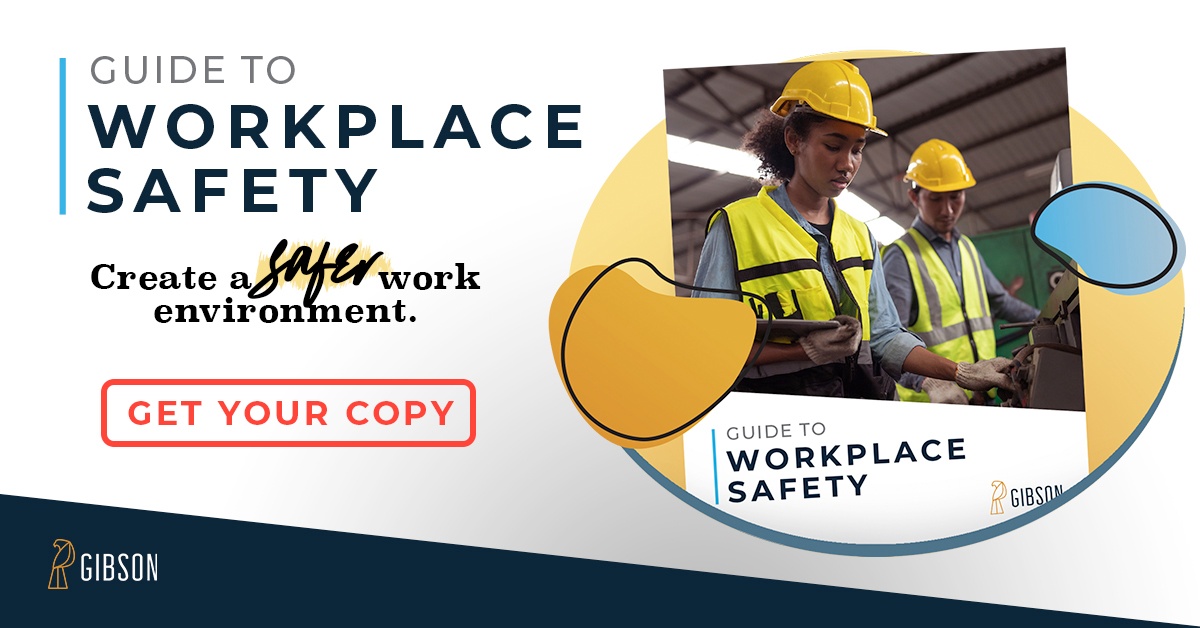 Accidents are preventable, predictable, and unacceptable. Heat illnesses are no exception – they are preventable. It is your responsibility as an employer to provide a workplace safe from excessive heat, as well as appropriately train your employees on understanding heat illnesses and how they can be prevented.
Accidents are preventable, predictable, and unacceptable. Heat illnesses are no exception – they are preventable. It is your responsibility as an employer to provide a workplace safe from excessive heat, as well as appropriately train your employees on understanding heat illnesses and how they can be prevented.
What Are Heat Illnesses?
Your body normally cools itself by sweating. But during hot and humid weather, sweating isn’t enough. If precautions are not taken, your body temperature can rise to dangerous levels and you can develop a heat illness.
The National Institute for Occupational Safety and Health (NIOSH) defines the following types of heat disorders:
- Heat rash is a skin irritation caused by excessive sweating during hot, humid weather.
- Heat cramps usually affect workers who sweat a lot during strenuous activity. This sweating depletes the body's salt and moisture levels. Low salt levels in muscles causes painful cramps. Heat cramps may also be a symptom of heat exhaustion.
- Heat syncope is a fainting episode or dizziness that usually occurs with prolonged standing or sudden rising from a sitting or lying position. Factors that may contribute to heat syncope include dehydration and lack of acclimatization.
- Heat exhaustion is the body's response to an excessive loss of the water and salt, usually through excessive sweating. Workers most prone to heat exhaustion are those that are elderly, have high blood pressure, and are working in a hot environment.
- Heat stroke is the most serious of the heat-related illnesses. It occurs when the body becomes unable to control its temperature: the body's temperature rises rapidly, the sweating mechanism fails, and the body is unable to cool down. When heat stroke occurs, the body temperature can rise to 106 degrees Fahrenheit or higher within 10 to 15 minutes. Heat stroke can cause death or permanent disability if emergency treatment is not given.
How Can Heat Illness Be Prevented?
As an employer, you should establish a heat illness prevention program. OSHA recommends your program include:
- Providing workers with water, rest, and shade;
- Gradually increasing workloads and allow more frequent breaks for new workers or workers who have been away to build a tolerance for working in the heat;
- Modifying work schedules as necessary;
- Planning for emergencies and training workers about the symptoms of heat-related illnesses and their prevention;
- And monitoring workers for signs of illness.
New workers, temporary workers, and those returning to work after time away can be the most vulnerable to heat stress and heat illnesses. They must be acclimatized. Acclimatization refers to the physical change that builds tolerance to the heat. It can be done by gradually increasing workload for new and returning workers and for everyone during a heat wave.
Employers need to create an environment that encourages water, rest, and shade, as those three elements can go a long way to prevent heat illnesses. Take a look at this infographic from NIOSH to see how else employers can help prevent heat stress:

Additional Resources
- OSHA’s campaign to prevent heat illness – education resources, training, online toolkit, and more
- NIOSH Workplace Safety & Health Topics – Heat Stress
- NIOSH newsletter – Preventing Heat-related Illness of Death of Outdoor Workers





